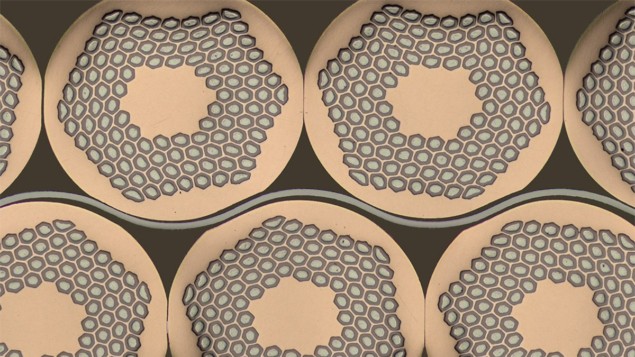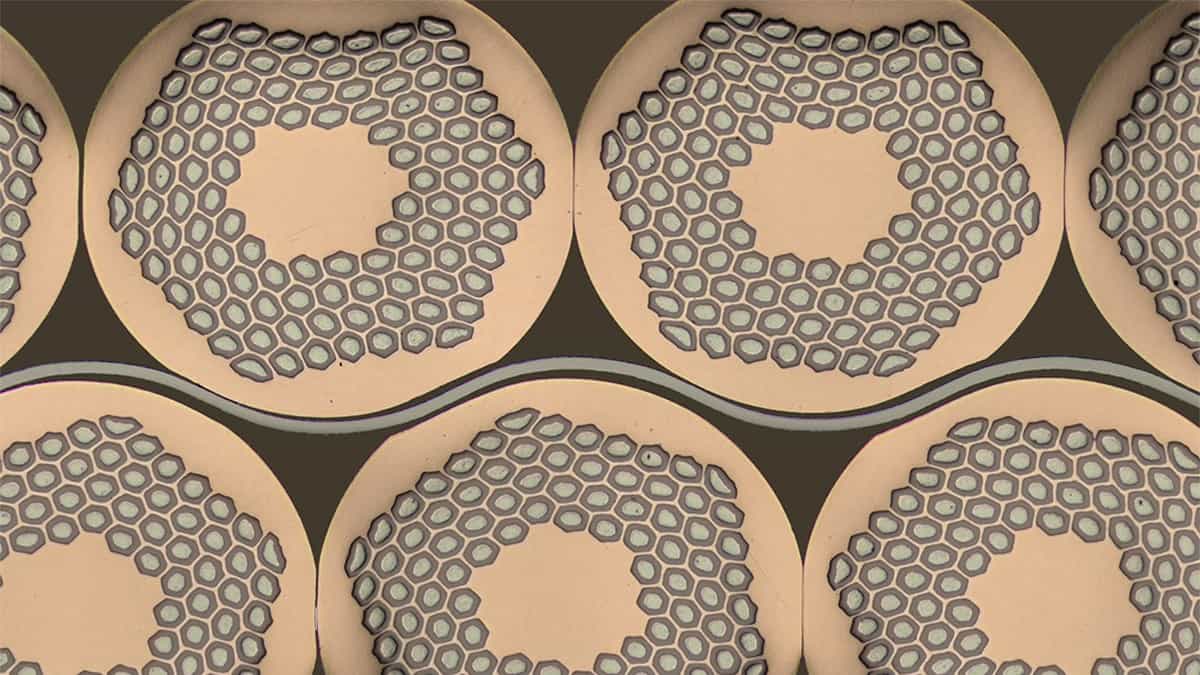
Quiz question: how many kilometres of new superconducting cables are being made in California for the next generation of focussing magnets at the Large Hadron Collider (LHC) at CERN in Geneva?
If your answer is “more than 2220 km”, you are correct – according to Lauren Biron at the Lawrence Berkeley National Laboratory. That is where 111 cables are being made for the high-luminosity upgrade of the LHC. The upgrade is expected to be completed in 2029, when the magnets will be used to focus high-energy protons and nuclei to tiny collision points at the LHC’s huge detectors.
Each cable is made by twisting 40 individual strands of superconducting niobium–tin wire around a stainless-steel core. The wires cannot touch each other and Berkeley Lab’s Ian Pong, who is leading the effort, describes the process as a ballet. “We have 40 dancers – the wire spools – pirouetting in a circle through the run of about three hours, and our responsibility is to make sure that no single missed step happens during the entire performance,” muses Pong.
The cable making is just one part of the US’s contribution to the LHC upgrade. The Accelerator Upgrade Project (AUP) also includes Brookhaven National Laboratory, the National High Magnetic Field Laboratory at Florida State University, and Fermi National Accelerator Laboratory.
After leaving Berkeley, the cables are wound into coils and heat-treated at Brookhaven Lab and Fermilab. The coils are then sent back to Berkeley, where four coils are assembled into quadrupole magnets.
Motion capture technology
Staying in the US, researchers at the University of Kansas and colleagues have used motion capture technology to study why some basketball players are better than others at taking free throws. If you are not familiar with the game, a free throw is taken unopposed at a distance of 4.6 m from the basket. The team defined a proficient shooter as someone who was on target 70% or more of the time and the study involve 34 men – each of who had at least four years of basketball playing experience.
Each subject attempted 10 free throws and their motions were captured by nine high-speed, high-definition cameras. The images revealed that proficient shooters had more control over their body motion. Furthermore, success was associated with lower knee and centre of mass peaks and lower mean angular velocities when compared with nonproficient shooters. The researchers also found that proficient shooters released their basketballs at greater heights and had less forward trunk lean at the point of release.
“These findings imply that basketball shooting motion is not as simple as some may think. Shooting efficiency can’t be simply attributed to one biomechanical variable. It is founded on a mix of multiple segmental body movements performed in a controlled manner,” explains Dimitrije Cabarkapa, who is associate director of the Jayhawk Athletic Performance Laboratory at the University of Kansas.
The research is described in the journal Frontiers in Sports and Active Living.
